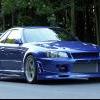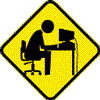
Defragmenting Problems
#1

 Posted 11 April 2010 - 02:37 PM
Posted 11 April 2010 - 02:37 PM

#2

 Posted 11 April 2010 - 03:02 PM
Posted 11 April 2010 - 03:02 PM

The only way around that (to get a more thorough defrag) is to use a defragger which can be set to run at boot time before Windows loads. That allows more files to be accessible for defragging.
There aren't many free ones that can perform a boot-time defrag, but I believe 'UltraDefrag' can:
http://ultradefrag.sourceforge.net/
Edited by phillipcorcoran, 11 April 2010 - 03:05 PM.
#3

 Posted 11 April 2010 - 03:07 PM
Posted 11 April 2010 - 03:07 PM

Additionally, it will NOT defrag ANY files that it considers DIRTY ie: corrupted.
Before I can really advise you I need to know the capacity of your hard drive, presuming there is ONLY one with a single partition OR at the most a primary with ALL except the inbuilt recovery partition if
that is included, usually on a branded PC. AND the free space. OR for all the disks. (Never defrag a recovery file system)
Second question, "Do you have the XP install CD so that we can run scannow. (System File Checker)
Third question, What was the percentage of file fragmentation, when it reported defrag necessary. OR did you not look.
Pls come back with the answers and we can then proceed.
Edited by Macboatmaster, 11 April 2010 - 03:09 PM.
#4

 Posted 12 April 2010 - 10:51 AM
Posted 12 April 2010 - 10:51 AM

Most common reasons for an 'incomplete' defrag are (a) fragmented system files; these cannot be processed by the windows defragger (b) insufficient free disk space. There are not many options when it comes to (a) i don't know of any freeware defragger that will defrag system files. However, commercial utilities such as Diskeeper 2010 (Not free, they have free trial versions though that will serve your purpose) can defrag all files including system files via normal defrag and/or boot-time defrag. Free space is also not a consideration, since these commercial utilities in as less as 2-3% free space in auto defrag mode.
Regarding chkdsk, if there is any file corruption, usually the whole volume (partition) will be marked as 'dirty' and defrag will not even start; this is a safety feature. Running chkdsk will fix the corruption.
You can run chkdsk with the /r switch as detailed here http://support.microsoft.com/kb/315265
For eg, to run chkdsk on c:
Start --> Run --> Type cmd and when the command line interface comes up, type chkdsk c:/r . Substitute c: with the appropriate drive letter as required.
In your case, since the defrag ran uneventfully, I don't think you have file system corruption, but you can always run chkdsk once if you want peace of mind
#5

 Posted 14 April 2010 - 09:50 AM
Posted 14 April 2010 - 09:50 AM

Well, as long as system files being left fragmented is normal, then that's ok. I just wanted to be sure.
Macboatmaster:
1) My computer is a Compaq and I have two hard disk drives-- C:PRESARIO (5.45 GB free; 30.6 GB total) and D:PRESARIO (2.38 GB free; 6.59 GB total).
2) No, I don't have the XP install CD; the computer was given to us without it.
3) And no, I'm afraid I didn't look!
arborman:
The files were, at least mostly, fragmented system files. But there was enough free space for defragmenting--16%. I ran chkdsk as you suggested. It found about 10 orphaned files and advised me to run chkdsk/f to fix them. So I did, and tried defrag. again. This time, it said defragging wasn't needed, but I did anyway, because there were still a lot of fragmented files. When it was done, there were only two system files that could not be defragmented. So maybe this is something to not worry about. I just wanted to be sure.
Thanks!
#6

 Posted 14 April 2010 - 10:02 AM
Posted 14 April 2010 - 10:02 AM

Run something like CCleaner and clean up old system restore points. The System Volume Information directory is locked by default and will not defrag unless you tweak a few things. Info to remove permissions: http://support.microsoft.com/kb/309531
#7

 Posted 14 April 2010 - 10:19 AM
Posted 14 April 2010 - 10:19 AM

#8

 Posted 14 April 2010 - 12:04 PM
Posted 14 April 2010 - 12:04 PM

#9

 Posted 14 April 2010 - 01:59 PM
Posted 14 April 2010 - 01:59 PM

C drive has over 15% free so the problem doesn't seem to be the disk itself.C:PRESARIO (5.45 GB free; 30.6 GB total)
Try the following in order to clear out temp and cache files. Then run the Auslogics Defrag to straighten everything up.
Download TFC by OldTimer to your desktop
- Please double-click TFC.exe to run it. (Note: If you are running on Vista, right-click on the file and choose Run As Administrator).
- It will close all programs when run, so make sure you have saved all your work before you begin.
- Click the Start button to begin the process. Depending on how often you clean temp files, execution time should be anywhere from a few seconds to a minute or two. Let it run uninterrupted to completion.
- Once it's finished it should reboot your machine. If it does not, please manually reboot the machine yourself to ensure a complete clean.
Download Auslogics Defrag from the link in my signature below. Auslogics Defrag in my opinion is better because:
It does a more comprehensive job at Defragging
It will actually show you what it is doing
At the end of working it will show you how much speed you picked up
You can view a online log of the files that Auslogics defragged
#10

 Posted 14 April 2010 - 03:38 PM
Posted 14 April 2010 - 03:38 PM

The Op has a 30gb drive which is small by todays standards so I doubt thst something is "eating" the drive space.Try something like WinDirStat and find out what's eating up your drive space.
The op probably has temp file, cache, etc that needs cleaning and YES there are probably some programs the OP could uninstall to get more space.
123runner
#11

 Posted 15 April 2010 - 05:53 PM
Posted 15 April 2010 - 05:53 PM

A few months back, when I turned the computer on, it said that something was missing and to restart it. I did multiple times, all with the same result. The only option that worked was one where I could do a system recovery. Since I didn't have the XP install CD (the computer was given to us) I didn't know what else to do.
After the recovery was over, and I was trying to get my anti-virus programs re-installed, I discovered that whereas before the recovery, there was about 15% (5 GB) free space left. That was with all my anti-virus, photo programs, and multiple games. After the recovery, I had NO free space left, and all my anti-virus programs and games were gone.
I discovered a "second copy" of my computer! It's under C:> Documents and Settings> "Owner.(computer name)" and "Owner.(computer name).000". The first one contains all the pictures and documents I had before this system recovery, and the .000 one has only the documents and pictures that I had at the time that a friend had previously done a recovery for me. This .000 is also the default "My Documents" and "My Pictures".
I had to delete a lot of programs that I had never seen before and had never used--ones that had come with the computer's previous owner and had been deleted before I got it--before I could even get all my anti-virus programs back. I don't even have all the games and other programs I had had installed because there just hasn't been enough room! Like I said, I'm not sure what to do about this, and it says these files are hidden and should not be modified.
Sorry for the long post, but this has been bothering me!!
Edited by purple21, 16 April 2010 - 10:34 PM.
#12

 Posted 15 April 2010 - 06:13 PM
Posted 15 April 2010 - 06:13 PM

Lets look at the boot.ini file.
1. Click Start, click Run, type sysdm.cpl and then click OK.
2. Click on the Advanced tab, and then click Settings
3. In the Startup and Recovery area at the bottom click Settings.
4. Under System Startup click Edit. This opens the Boot.ini file in Notepad ready for editing.
5. Copy and paste the file in your next reply.
Do not make any changes to this file!
123runner
#13

 Posted 16 April 2010 - 10:57 PM
Posted 16 April 2010 - 10:57 PM

Whenever I turn the computer on now, everything is normal; I don't have to "choose" anything to boot it up. But if I want to see a document that I typed any time between when my friend did the first recovery and the second recovery I did, I have to navigate through the folders on C: drive, then look under Documents and Settings, then I have two options: Owner.computer name and Owner. computer name.000. The first has the documents I did between the recoveries, and the second has documents I did at the time of the first recovery.
I know a 30 GB hard drive is very small, but I'm sure this "copy" is taking up considerable space.
Here is the file asked me to paste:
[boot loader]
timeout=0
default=multi(0)disk(0)rdisk(0)partition(2)\WINDOWS
[operating systems]
multi(0)disk(0)rdisk(0)partition(2)\WINDOWS="Microsoft Windows XP Home Edition" /fastdetect /NoExecute=OptIn
C:\CMDCONS\BOOTSECT.DAT="Microsoft Windows Recovery Console" /cmdcons
#14

 Posted 17 April 2010 - 05:21 AM
Posted 17 April 2010 - 05:21 AM

That file shows that you only have 1 OS on the computer.
This tells me that if you save something to the "My Documents" folder that it is being saved to here.This .000 is also the default "My Documents" and "My Pictures"
If this is correct you should be able to copy what you want from the other folder and then delete the 1 folder that is not used anymore.
#15

 Posted 19 April 2010 - 01:53 PM
Posted 19 April 2010 - 01:53 PM

Well, I figured I could delete one of these folders, but for one thing, I wasn't sure which was the better one, or the one I should be using as the main one. And also, a warning is always given advising not to modify anything in C drive.
So you're saying I should consider the .000 as my main folder? And since this folder is under Documents and Settings, how can I be sure I'm copying and moving all the files I need (besides the pics and documents)? The settings no longer be needed, then? I'm just nervous about deleting things, but I'm really tired of the lost space!!
Thanks.
Similar Topics
0 user(s) are reading this topic
0 members, 0 guests, 0 anonymous users
As Featured On:


















 Sign In
Sign In Create Account
Create Account

